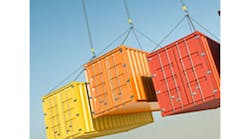Ensuring that trade is both efficient and secure, the ‘CORE’ project (Consistently Optimized Resilient Secure Global Supply-Chains) was recently revealed at Intermodal Europe 2014.
Speed, reliability and minimizing costs are the objectives of the project backed by 70 partners. Industrial partners include: shippers, ocean carriers, freight forwarders, terminal operators, trade associations and technology providers.
The project fulfills the promise made by the U.S. Department of Homeland Security and three EU-Commissioners to collaborate in supply chain security research and jointly demonstrate SCS technologies on trade lane EU-US (‘post 9/11’).
CORE is supported by users and big brands – alongside authorities i.e. EU Commission (DG Enterprise and Industry; DG Mobility and Transport; DG Taxation and Customs Union), national trade related ministries (BE-FR-IT-NL), border control agencies (DHS, WCO) and INTERPOL.
Some underlying issues making these changes necessary is the €7 billion annual cost incurred by the EU due to lack of interoperability in multimodal information exchange. Supply chain disruptions have been found to cut the share price of impacted companies by 7%. And incorrect information in 60% of declarations results in customs not knowing the true identity of the consignor/consignee.
The potential value of monitoring in the new systems, which will be across numerous industries, will be to reduce cost by 5% while an increase in information will lead to a 0.1% reduction in the costs of missing and delayed goods.
Additionally it is estimated that the total number of HGV-related road accidents can be reduced by 0.2%, with an even higher reduction for intermodal rail transport.



